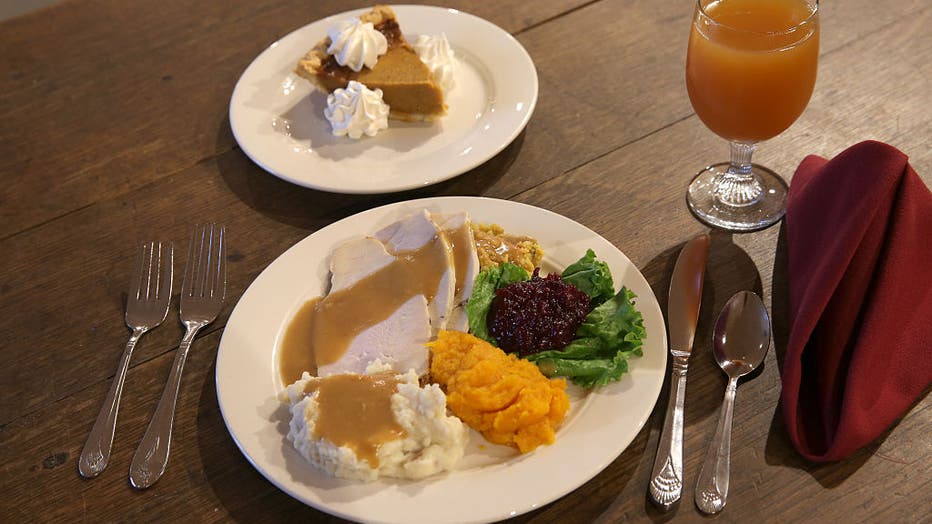Don't wait more than 2 hours to put away Thanksgiving leftovers, USDA says
Thanksgiving celebrations can yield enough food to provide dinner for several days, but if you’re not careful, they could make you sick.
According to the United States Department of Agriculture, perishable leftovers should be refrigerated within two hours of coming out of the oven or refrigerator.
“After two hours, perishable food enters the Danger Zone (between 40 to 140 degrees Fahrenheit) where bacteria can multiply quickly and cause the food to become unsafe,” the USDA wrote in its annual food safety blog post. “If foods have been left out for more than two hours, discard items to prevent foodborne illness.”
RELATED: Trump pardons national Thanksgiving turkey at the White House
According to the Centers for Disease Control and Prevention, the bacteria Clostridium perfringens grows in cooked foods left at room temperature.
“It is the second most common bacterial cause of food poisoning,” the CDC said in a blog post. “The major symptoms are vomiting and abdominal cramps within 6 to 24 hours after eating.”
The USDA recommends packing up leftovers in smaller, more shallow containers. They allow food to cool more quickly than larger containers.

Turkey dinner on an antique styled table. About 4,000 lbs of turkey, 350 pies, 4,500 dinner rolls are served at Plymouth Plantation on Thanksgiving. (Photo by David L. Ryan/The Boston Globe via Getty Images)
Once the food is refrigerated, experts advise eating it before the Monday following Thanksgiving. Consuming leftovers becomes unsafe after four days of refrigeration.
To extend the life of your leftovers, the USDA suggests freezing them. Frozen leftovers remain safe indefinitely, the USDA said, but the quality will decrease over time.
“If you store leftovers in the freezer, they will be of best quality within two to six months,” the USDA said.
RELATED: PHOTOS: Presidential turkeys arrive in DC ahead of annual pardon
When reheating the food, experts recommend heating it to an internal temperature of 165 degrees Fahrenheit.
If you’re using a microwave, the USDA suggests covering the food in a glass or ceramic dish and adding some liquid as needed.
“Because microwaves have cold spots, check the internal temperature of the food in several places with a food thermometer after allowing a resting time,” the USDA said.
This story was reported from Atlanta.

